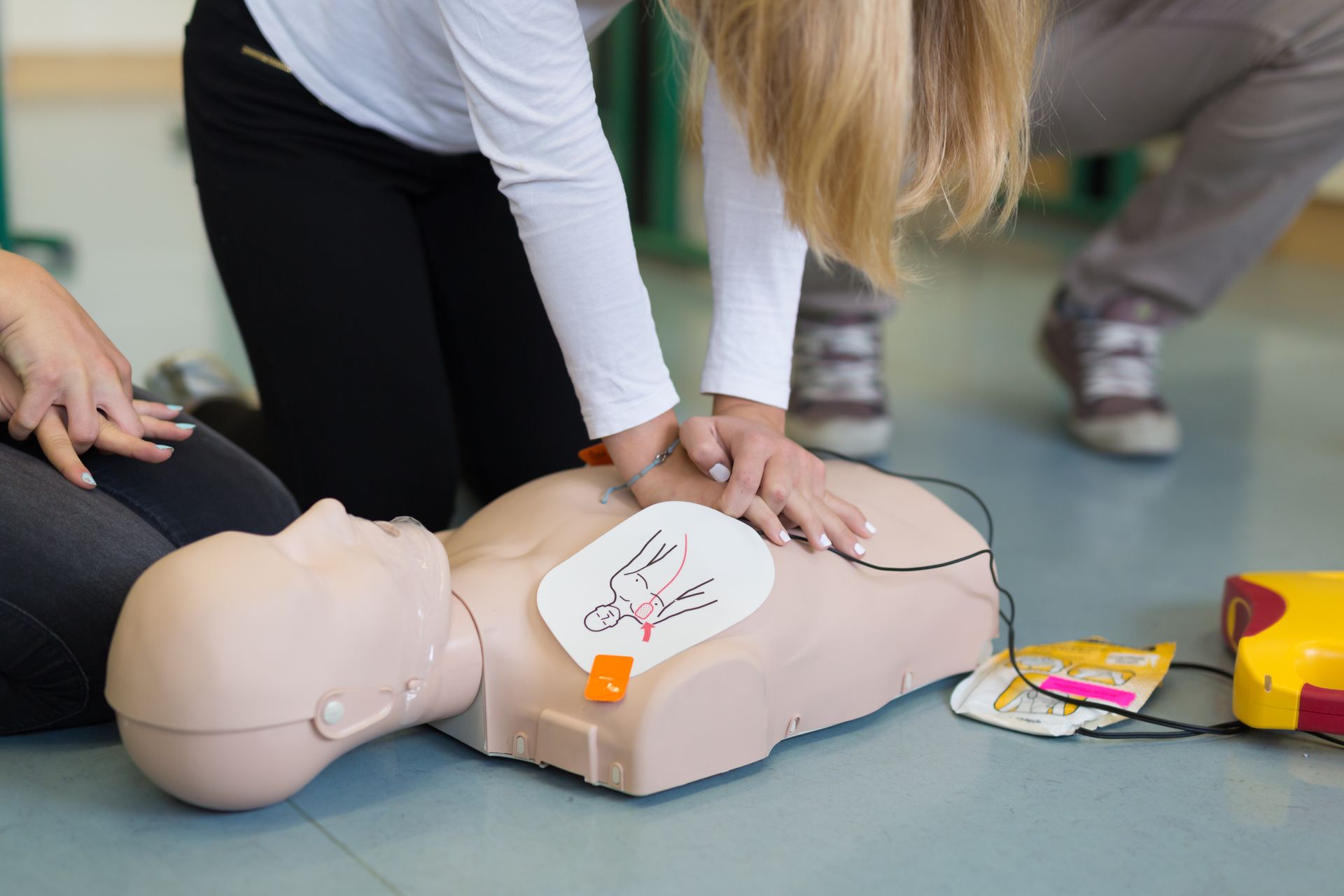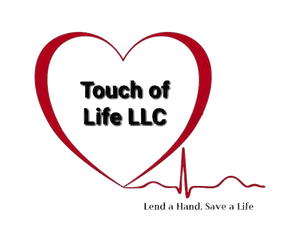Cpr Certification Training Near Hartford, CT
Heartsaver courses are designed for anyone with little or no medical training who needs a course completion card for job, regulatory (for example, OSHA), or other requirements. These courses can also be taken by anyone who wants to be prepared for an emergency in any setting. For many Heartsaver courses, students receive a course completion card that is valid for 2 years.
 Button
Button
There are 5 different Heartsaver classes to meet all of your needs
- First Aid/CPR/AED
- First Aid
- CPR/AED
- Pediatric First Aid/CPR/AED
- Bloodborne Pathogens
Let Us Know How We’re Doing
Heartsaver® First Aid CPR AED Training
The AHA’s Heartsaver First Aid CPR AED course trains participants to provide first aid, CPR, and use an automated external defibrillator (AED) in a safe, timely, and effective manner. Reflects science and education from the American Heart Association Guidelines Update for CPR and Emergency Cardiovascular Care (ECC). Available in both blended learning (online learning at your own pace and an in person skills check) as well as classroom. Both options result in a 2 year certification upon completion.
Who should take this course?
The AHA’s Heartsaver First Aid CPR AED Course is designed for anyone with little or no medical training who needs a course completion card for their job, regulatory (e.g., OSHA), or other requirements, or anyone who wants to be prepared for an emergency in any setting.
What does this course teach?
- First aid basics
- Medical emergencies
- Injury emergencies
- Environmental emergencies
- Preventing illness and injury
- Adult CPR and AED use
- Opioid-associated life-threatening emergencies
- Optional modules in Child CPR AED and Infant CPR
Heartsaver First Aid CPR AED is available in two different training methods – blended learning and classroom training. All Heartsaver First Aid CPR AED course options teach the same AHA science-based skills and result in the same AHA Course Completion Card.
Heartsaver® CPR AED Training
The Heartsaver CPR AED course trains participants to give CPR, and use an automated external defibrillator (AED) in a safe, timely, and effective manner. Reflects science and education from the American Heart Association Guidelines Update for CPR and Emergency Cardiovascular Care (ECC). Available in both blended learning (online learning at your own pace and an in person skills check) as well as classroom. Both options result in a 2 year certification upon completion.
Who should take this course?
The AHA Heartsaver CPR AED Course is designed for anyone with limited or no medical training who needs a course completion card in CPR and AED use to meet job, regulatory, or other requirements.
What does this course teach?
- Describe how high-quality CPR improves survival
- Explain the concepts of the Chain of Survival
- Recognize when someone needs CPR
- Perform high-quality CPR for an adult
- Describe how to perform CPR with help from others
- Give effective breaths using mouth-to-mouth or a mask for all age groups
- Demonstrate how to use an AED on an adult
- Perform high-quality CPR for a child*
- Demonstrate how to use an AED on a child*
- Perform high-quality CPR for an infant*
- Describe when and how to help a choking adult or child
- Demonstrate how to help a choking infant*
*Child and infant modules are optional.
Heartsaver® First Aid Training
The Heartsaver First Aid course trains participants first aid basics for the most common first aid emergencies, including how to recognize them, how to call for help, and how to perform lifesaving skills. Reflects science and education from the American Heart Association Guidelines Update for CPR and Emergency Cardiovascular Care (ECC) and the 2015 AHA/Red Cross Guidelines for First Aid. Available in both blended learning (online learning at your own pace and an in person skills check) as well as classroom.
Who should take this course?
The AHA Heartsaver First Aid Course is designed for anyone with limited or no medical training who needs a course completion card in first aid to meet job, regulatory, or other requirements.
What does this course teach?
- First aid basics
- Medical emergencies
- Injury emergencies
- Environmental emergencies
- Preventing illness and injury
Heartsaver® Pediatric First Aid CPR AED Training
The Heartsaver Pediatric First Aid CPR AED course trains participants how to respond to and manage illnesses and injuries in a child or infant in the first few minutes until professional help arrives. Reflects science and education from the American Heart Association Guidelines Update for CPR and Emergency Cardiovascular Care (ECC) and the 2015 AHA/Red Cross Guidelines for First Aid. Available in both blended learning (online learning at your own pace and an in person skills check) as well as classroom. Both options result in a 2 year certification upon completion.
Who should take this course?
The AHA Heartsaver Pediatric First Aid CPR AED Course is designed for anyone involved in childcare who have a duty to respond to illnesses and injuries in a child or infant in the first few minutes until professional help arrives. Including: childcare workers, teachers, camp counselors, etc
What does this course teach?
First aid basics including medical, injury, poison, and environmental emergencies, preventing illnesses and injuries and controlling bleeding & bandaging. Covers topics like using a tourniquet, shock, internal bleeding, burns and electrical injuries, allergic reactions, breathing problems & dehydration, diabetes & low blood sugar, heat-and cold-related emergencies, drowning, amputations, bites and stings, broken bones and sprains. Also covers splinters, nose bleeds, fainting, seizures, and injuries to the head, eyes, neck, spine, mouth, and teeth.
CPR AED and choking: CPR and AED Use for Adults*, Children and Infants, Adult*, Child, and Infant Choking
*Optional module
Heartsaver® Bloodborne Pathogens Training
The Heartsaver Bloodborne Pathogens course teaches students how to protect themselves and others from being exposed to blood or blood-containing materials. This course is designed to meet Occupational Safety and Health Administration (OSHA) requirements for bloodborne pathogens training when paired with site-specific instruction. Reflects science and education from the American Heart Association Guidelines Update for CPR and Emergency Cardiovascular Care (ECC).
Who should take this course?
The AHA Heartsaver Bloodborne Pathogens Course is designed for anyone with a reasonable chance of coming into contact with bloodborne pathogens such as: Correctional Officers, Childcare workers, Security guards, Maintenance workers, School personnel, Hotel housekeepers, Health and fitness club staff, and Tattoo artists.
What does this course teach?
This course uses the PACT acronym (Protect, Act, Clean, Tell) and tagline, “Make a PACT, Know How to Act™,” to help students learn and easily recall bloodborne pathogens training.
Students learn how to:
- Protect themselves from blood or blood-containing materials.
- Act quickly and safely.
- Clean the area that has blood or blood-containing materials.
- Tell their supervisor about the incident.











